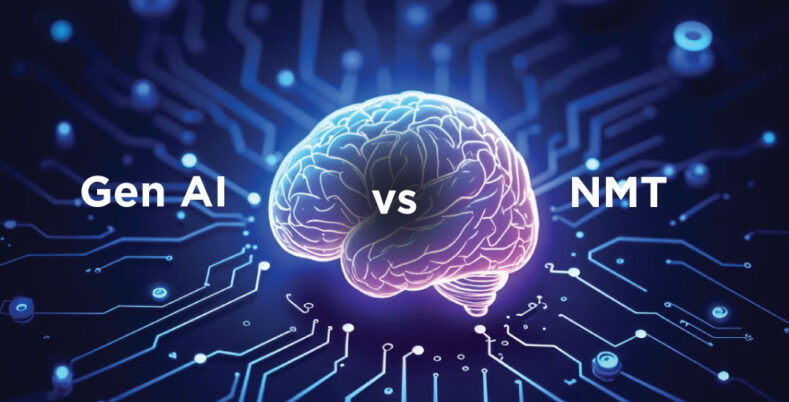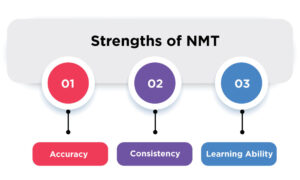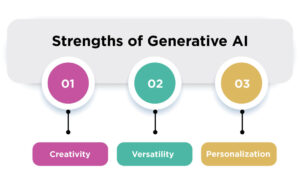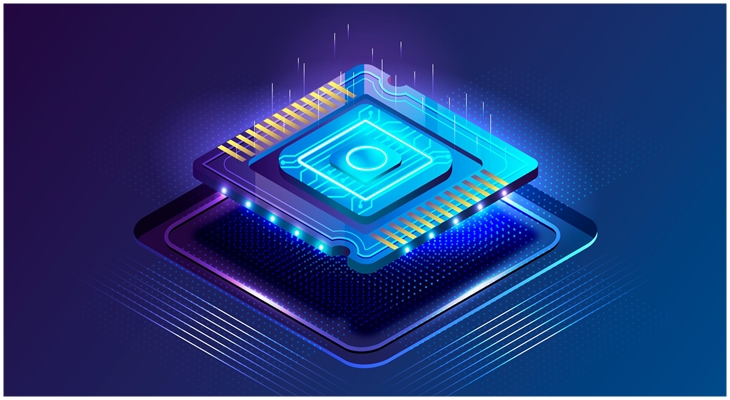Translation services are the need of the time, as businesses are expanding globally gradually. There are two technologies that lead this revolution; they are Generative AI (Gen AI) and Neural Machine Translation (NMT). But what exactly are they, and how do they impact the translation industry? Let’s understand the world of Gen AI vs NMT and see if generative AI is indeed a threat to translators.
What is Neural Machine Translation (NMT)?
Neural Machine Translation, also known as NMT, is a modern technique of text translation. NMT uses deep learning, a kind of artificial intelligence, to interpret and translate languages.
NMT considers whole sentences rather than words, making it produce more human-like-sounding translations.
Strengths of NMT
- Accuracy: NMT has high accuracy. It is about understanding the meaning of sentences more than traditional translation techniques.
- Consistency: It gives consistent translations for big texts, which is important for companies.
- Learning Ability: NMT systems improve with more data. They become more intelligent as they translate more data.
What is Generative AI?
Generative AI is like a creative collaborator. It is capable of creating new material, whether text, images or even music. Unlike NMT, which has the singular focus of translation, Generative AI can create new works based on patterns learned. For example, it can generate stories, create artwork, or even assist in marketing copy.
Strengths of Generative AI
-
- Creativity: Generative AI can generate original ideas and distinctive content, thus being suitable for creative works.
- Versatility: It can do multiple things beyond translation, for instance, summarize articles or provide answers.
- Personalization: Generative AI is able to adapt content to be specific to the targeted audience, leading to more user engagement.
Gen AI vs NMT: A Thorough Comparison
As we understand what Gen AI and NMT are, now let’s understand whether Gen AI is really a challenge for NMT in the field of translation. Let’s understand the difference between them.
| Feature | Generative AI | Neural Machine Translation (NMT) |
| Purpose | Creates original content | Translates text from one language to another |
| Creativity | Highly creative, Generates diverse outputs | Focused on accuracy and coherence in translation |
| Contextual Understanding | May struggle with deep context | Excels in understanding context and semantics |
| Consistency | Outputs may vary in quality | Provides consistent translations across texts |
| Training Data | Requires diverse datasets for effectiveness | Trained on large bilingual corpora for accuracy |
| Applications | Content generation, summarization, conversational AI | Translation of documents, websites, and conversations |
| Personalization | Capable of tailoring content to user preferences | Less focus on personalization |
| Error Rate | Higher potential for inaccuracies |
Generally lower error rate in translations |
How Are They Used Together?
Rather than having Gen AI vs NMT as a conflict, it is preferable to think of them as companions. A lot of companies are now implementing both technologies simultaneously. This is how:
- Post-editing: Once NMT has translated a piece of text, Generative AI may provide improvements or alternatives for it to be better written.
- Content Generation: Generative AI can be employed by companies to generate content in a single language and have it translated into other languages using NMT. This eliminates the time and labor involved.
- Culturizing: Translations can be customized to suit cultural environments through Generative AI so that the message is heard and understood within the target culture.
The Future of Translation
The translation business will continue to improve. The merger of Gen AI vs NMT can bring faster and better translating processes. On the one hand, NMT yields accuracy and coherence, and on the other hand, Generative AI incorporates creativity and uniqueness.
Gen AI vs NMT: Which is Better?
The issue of whether Generative AI is an actual challenge to NMT is not straightforward. Each technology has its advantages and disadvantages. Rather than competing, they can complement one another, making translation services better for all.
As companies and individuals keep working in the global arena, knowing how NMT and Generative AI play their parts will be important. Using both technologies, we can improve communication and overcome language barriers as never before.
The next time you consider translation, recall the thrilling interaction of Gen AI vs NMT and how they are revolutionizing the world of communication.
For more such informative blogs, visit KnowledgeNile!
FAQ
1. What challenge is the AI translation industry facing?
Answer: The biggest challenge for the AI translation industry is to maintain accuracy and context. This challenge is specifically related to idioms and cultural context, which can result in misunderstandings in translations.
2. Can Generative AI perform translation?
Answer: Yes, generative AI can be applied to translation by producing context-sensitive translations that learn over time with additional data.
3. Is NMT generative AI?
Answer: Yes, NMT is a type of generative AI that creates translations using deep learning to create translations based on the context of sentences.
Also Read:
MLOPs: Bringing together ML Development and Real-World Impact
Human-AI Collaboration – Redefining Work and Productivity for Tomorrow







